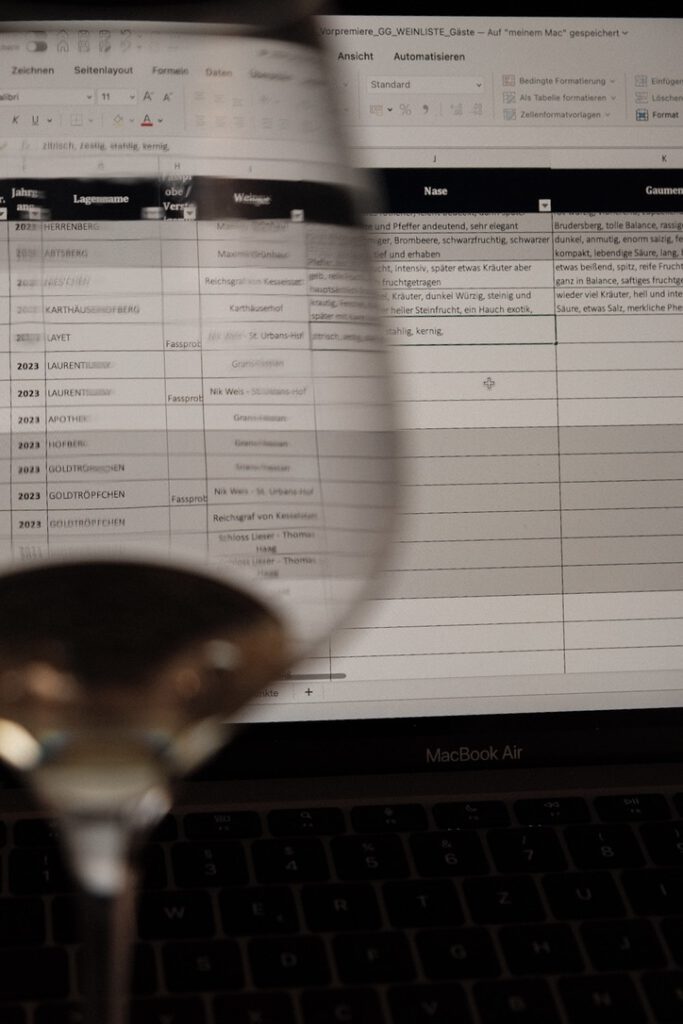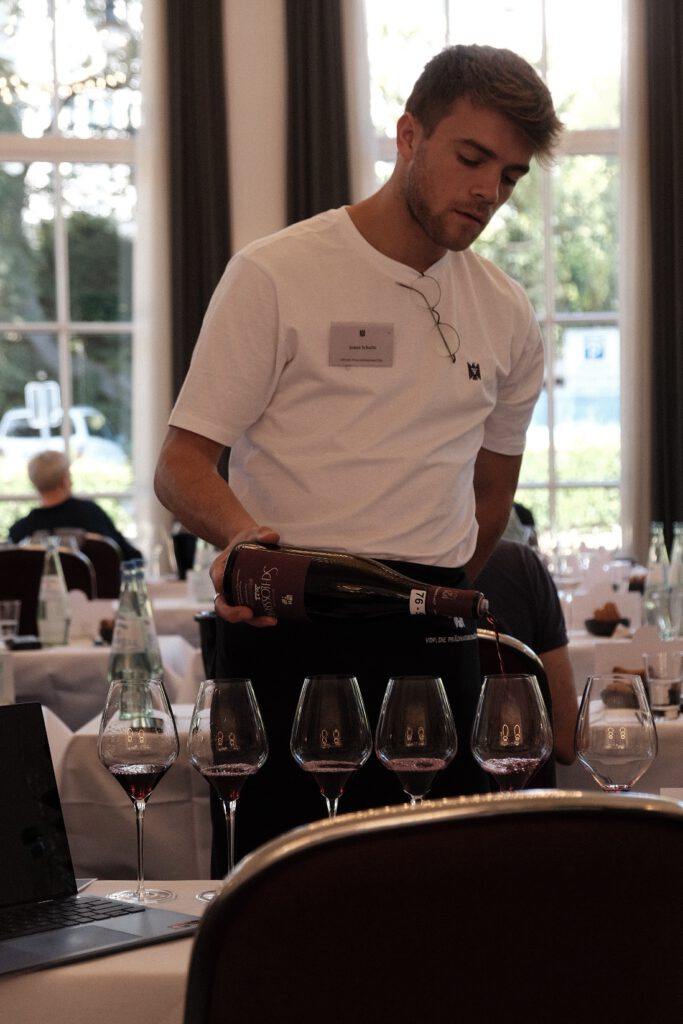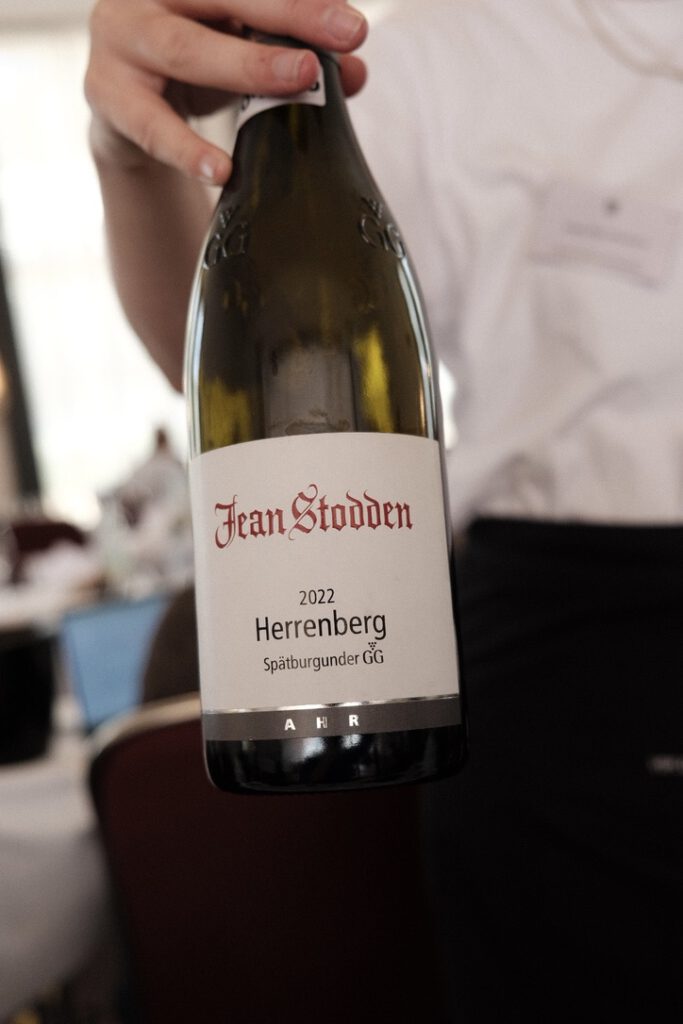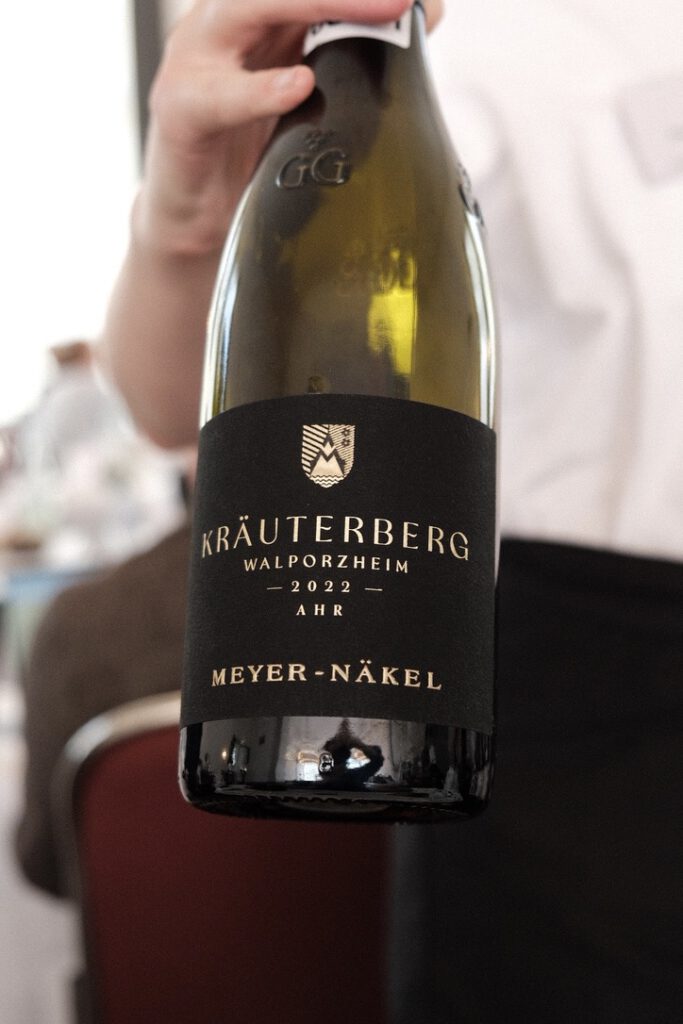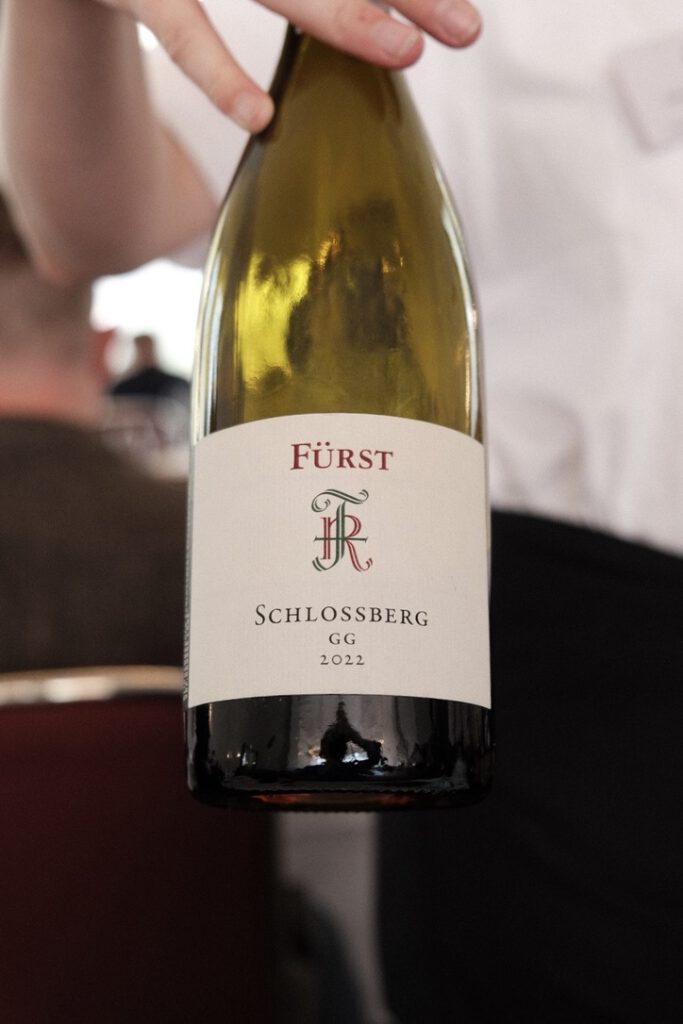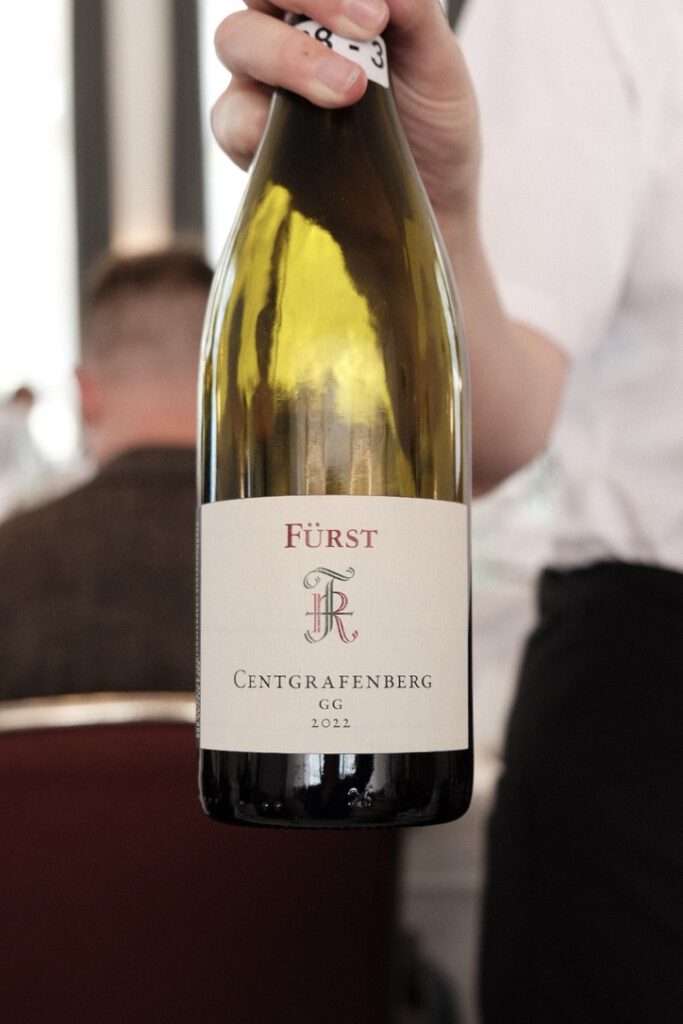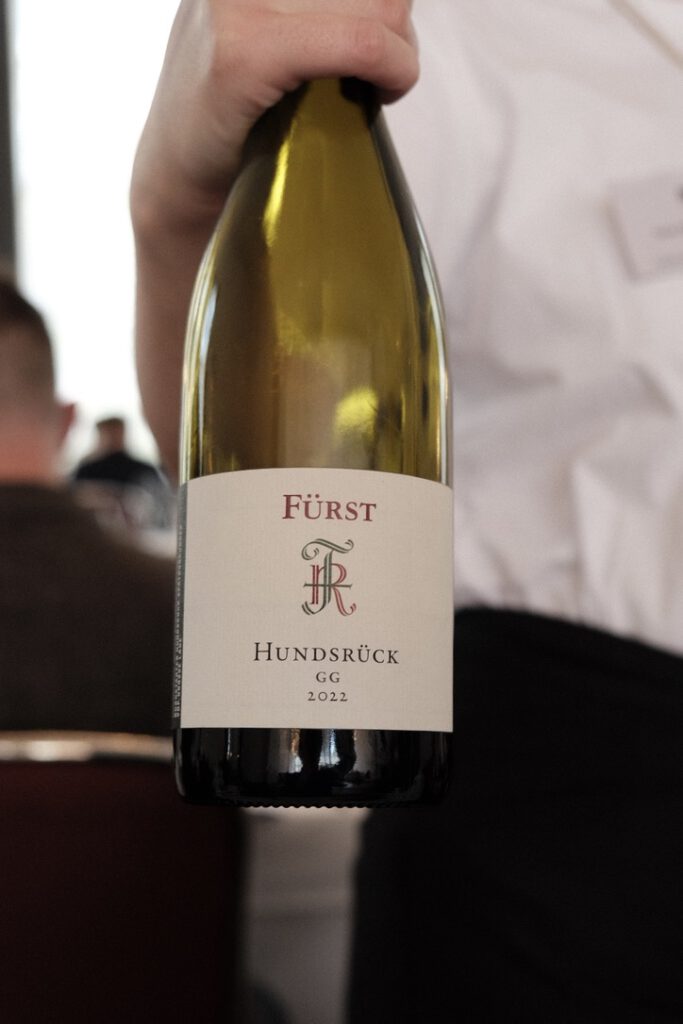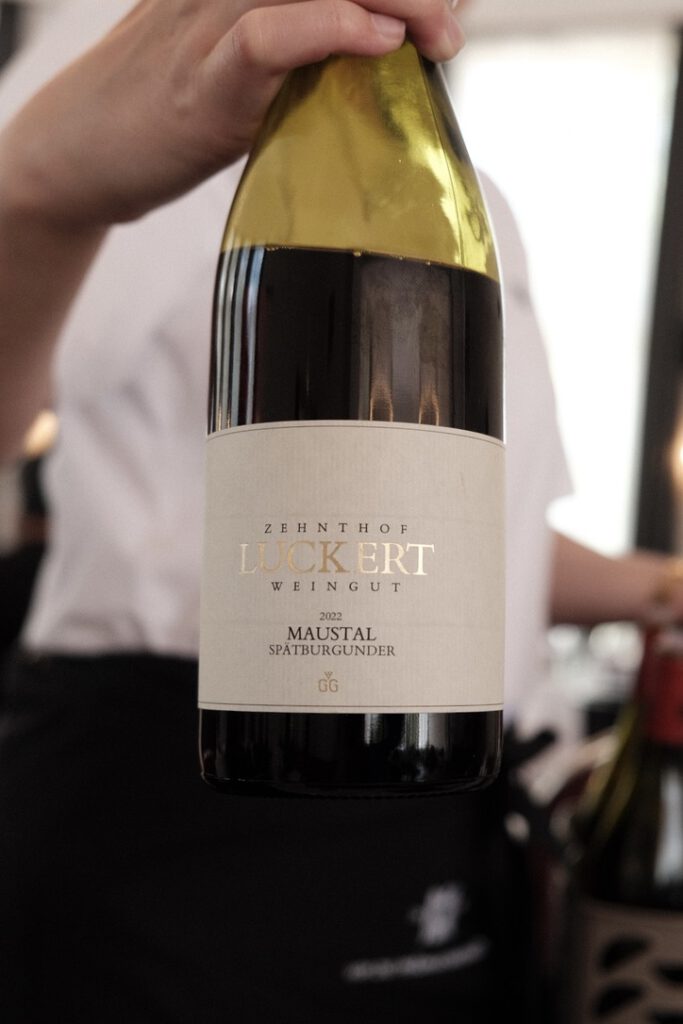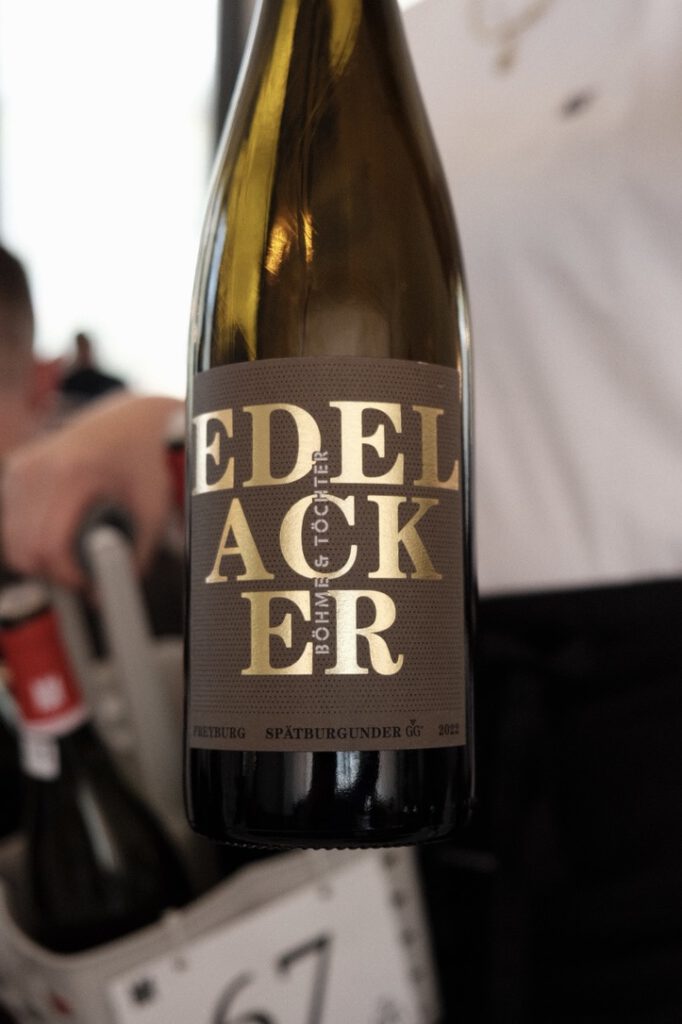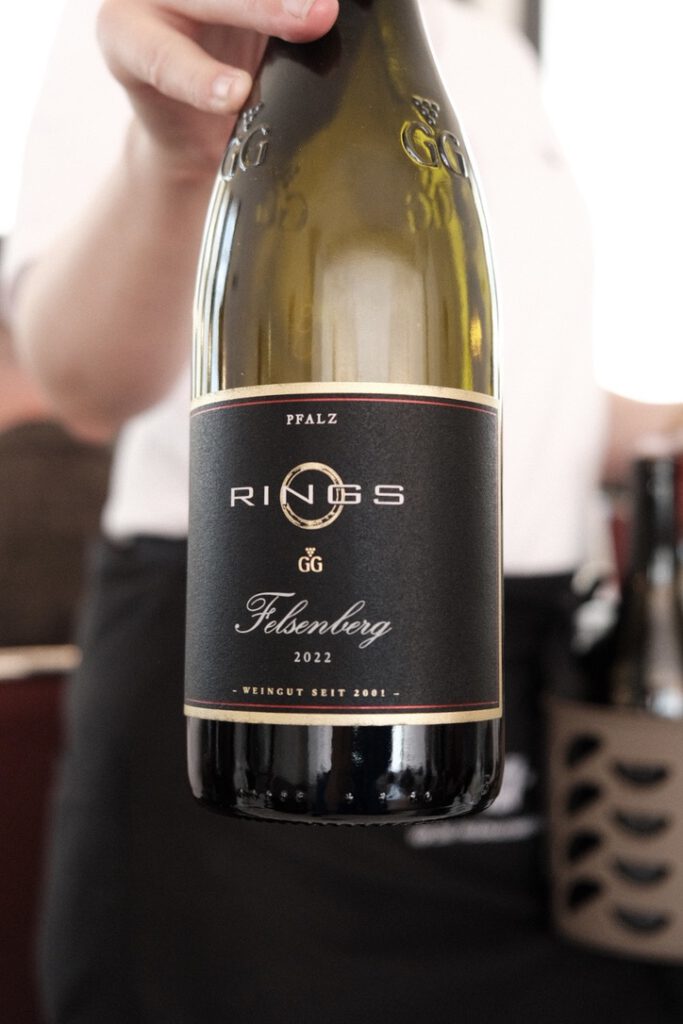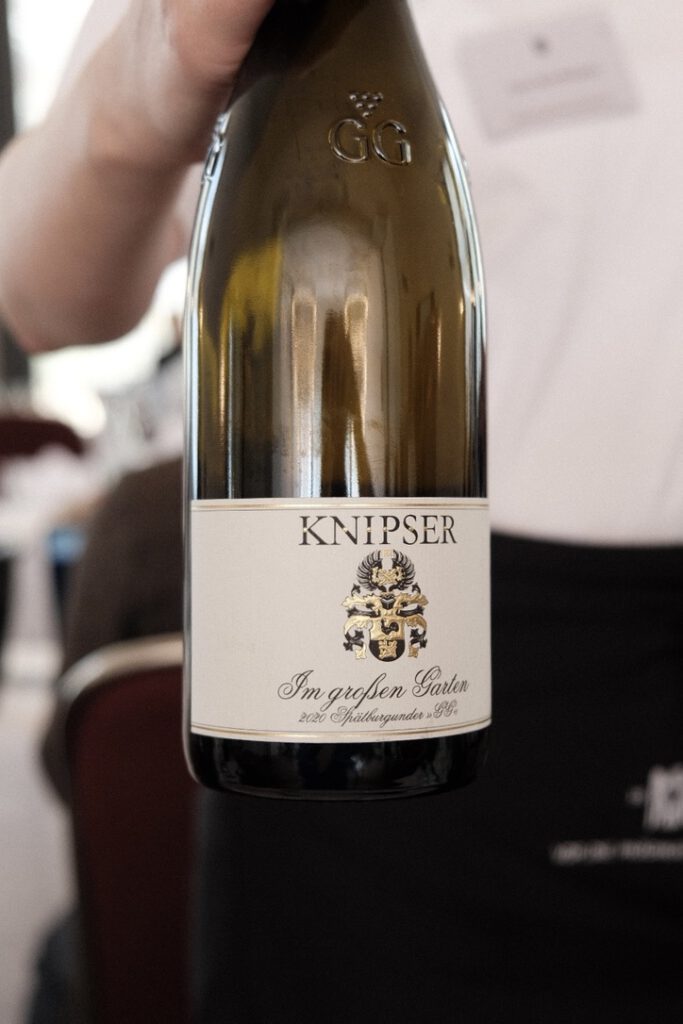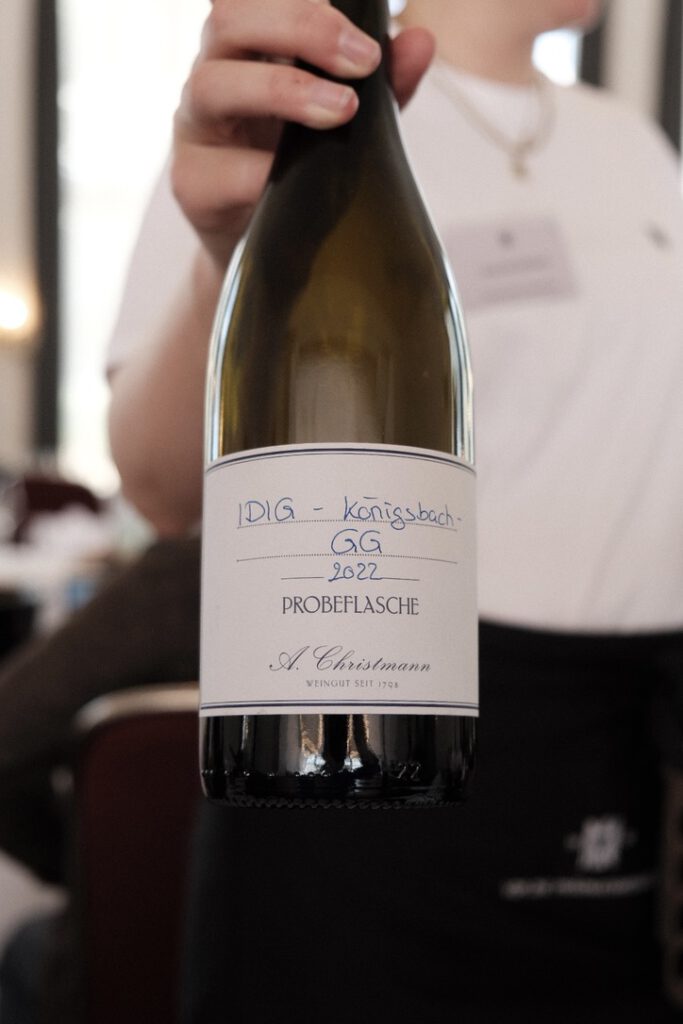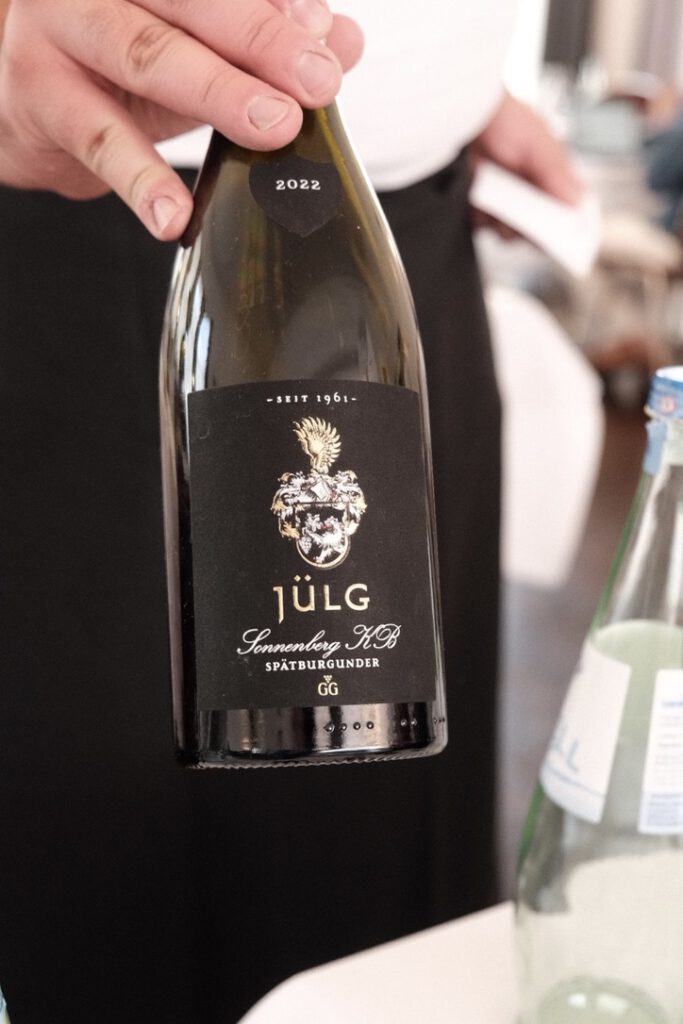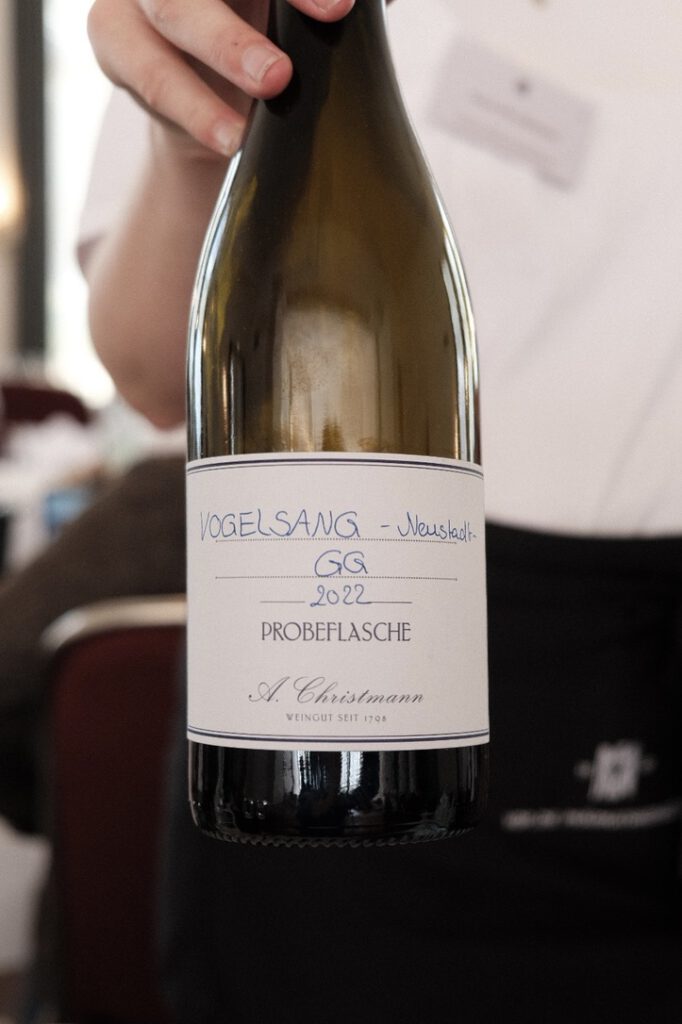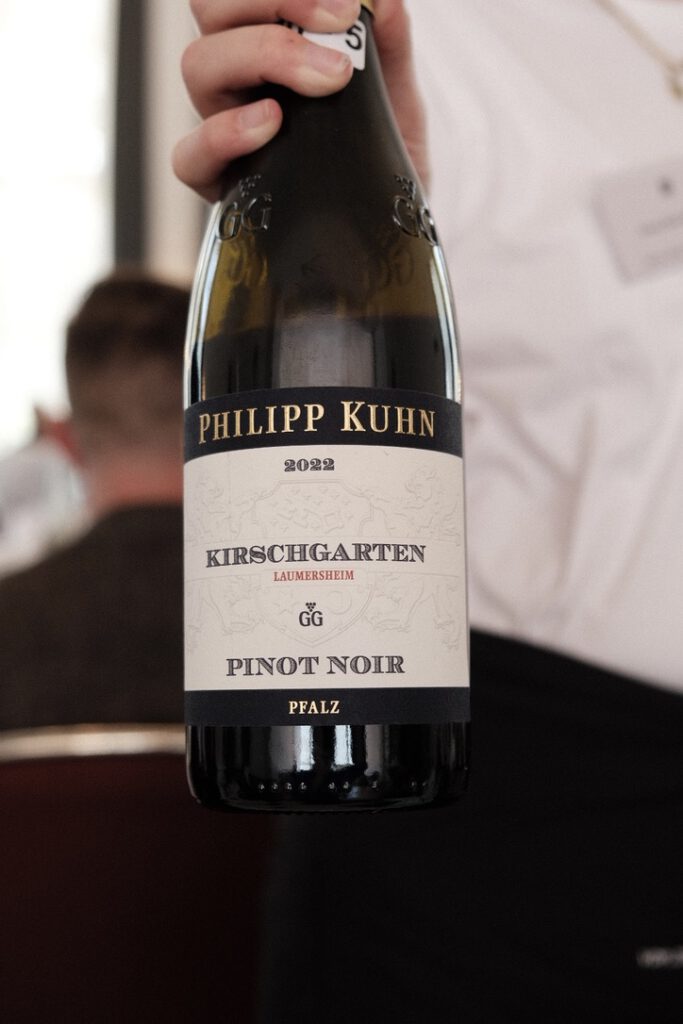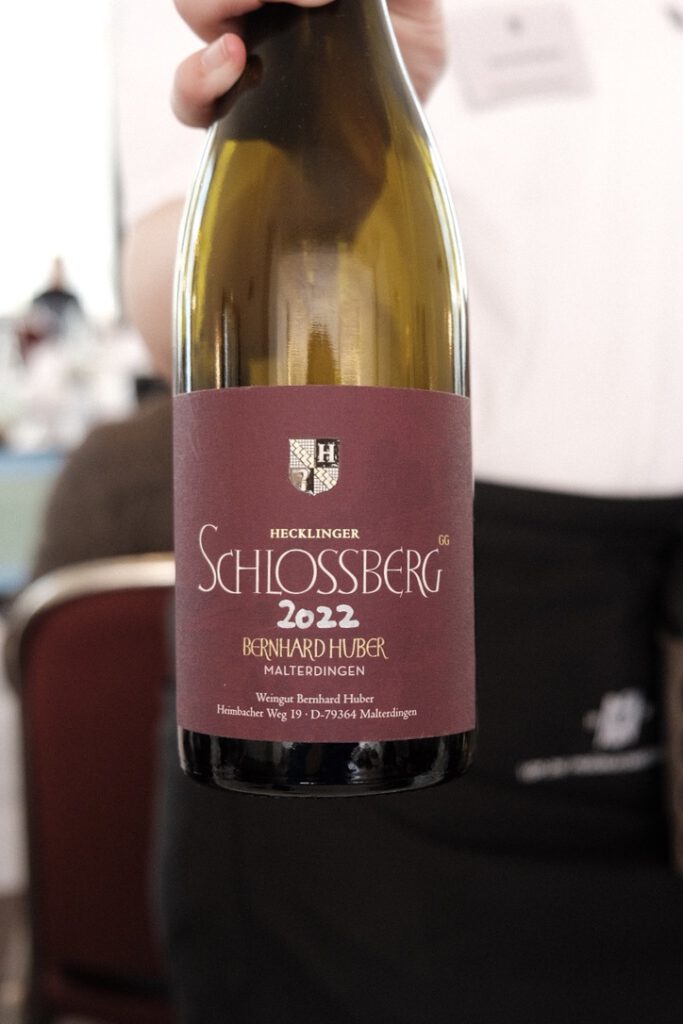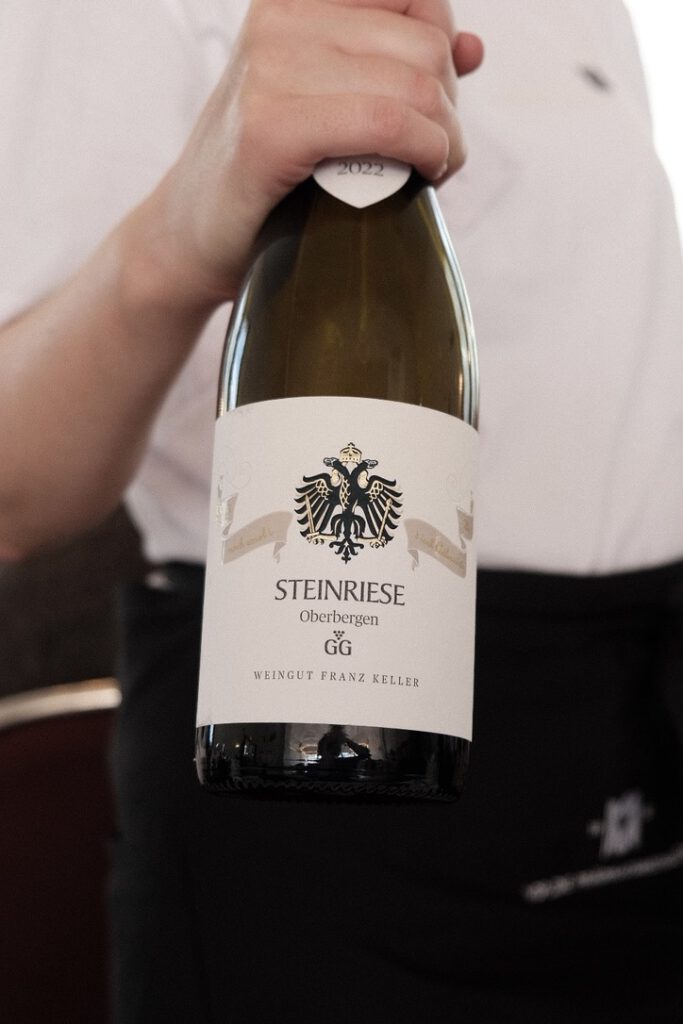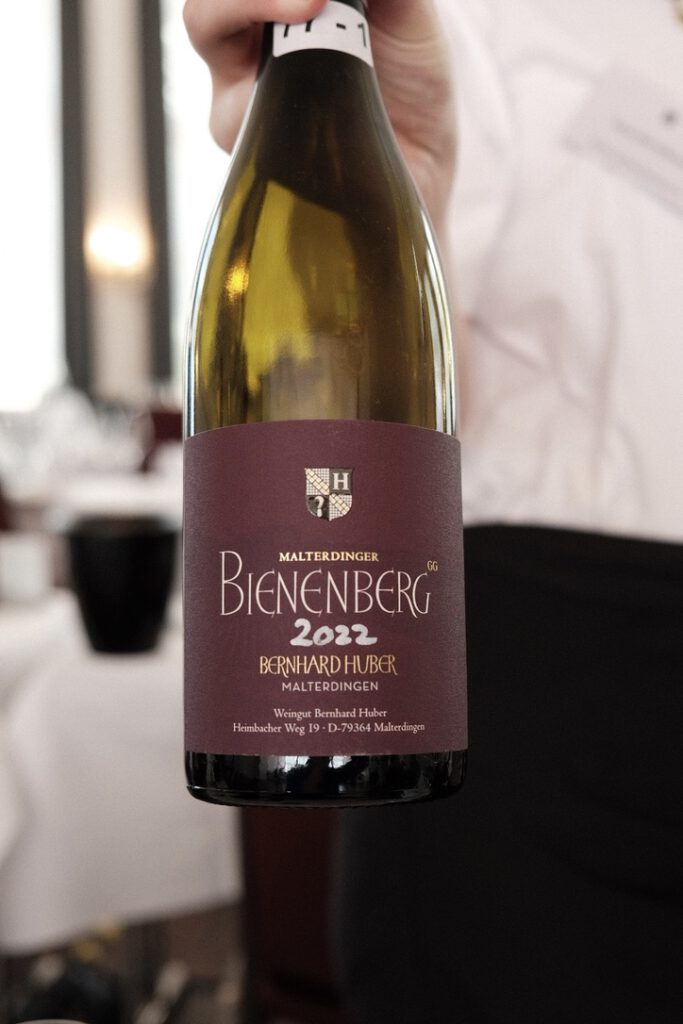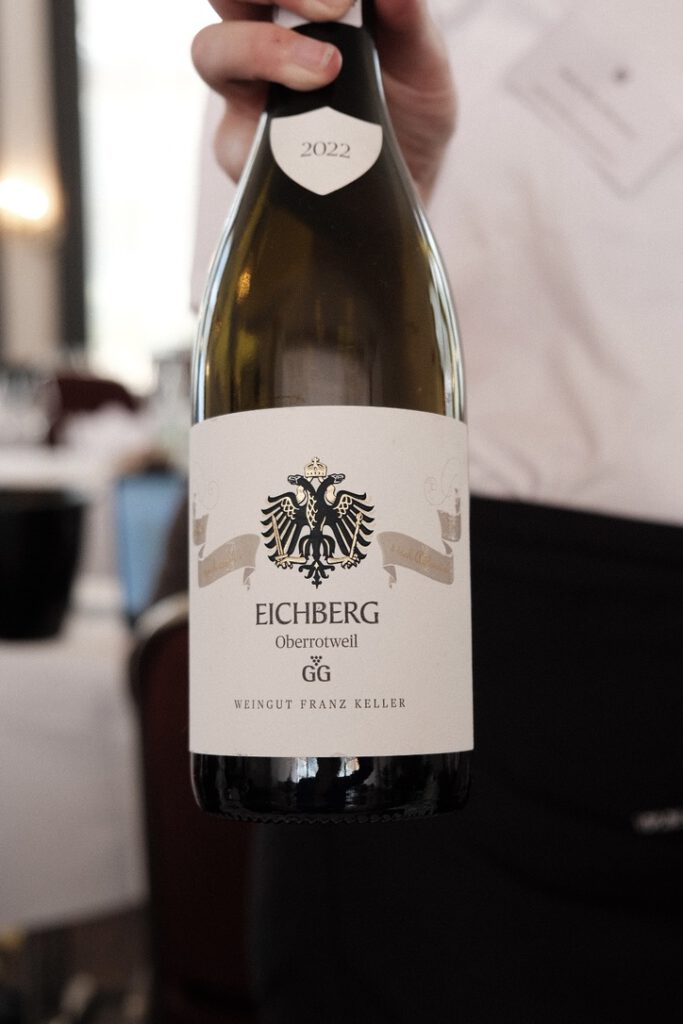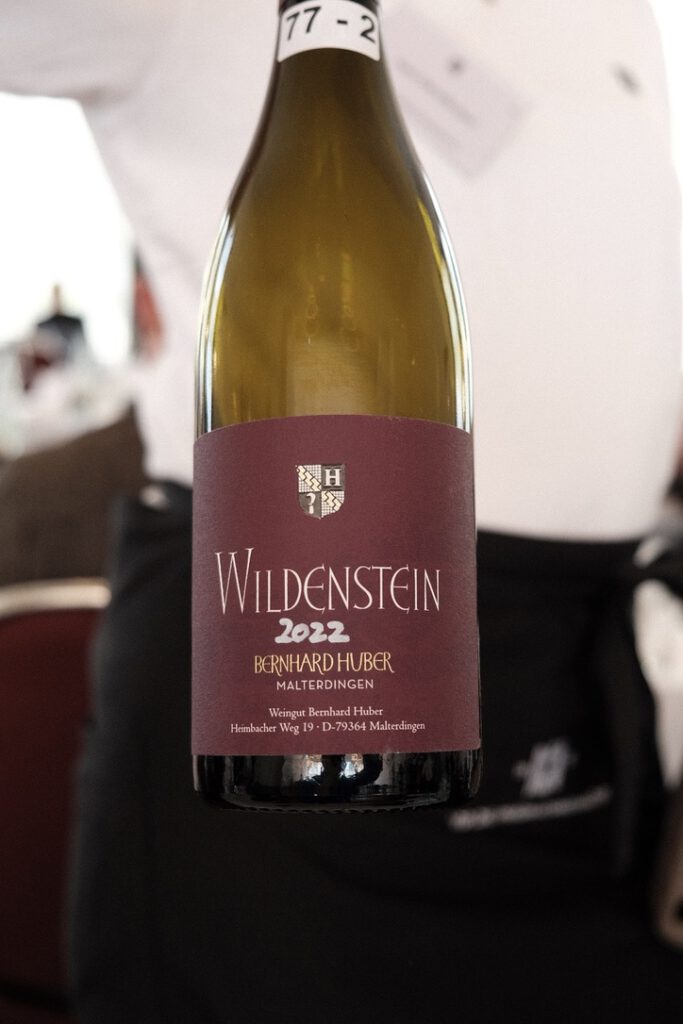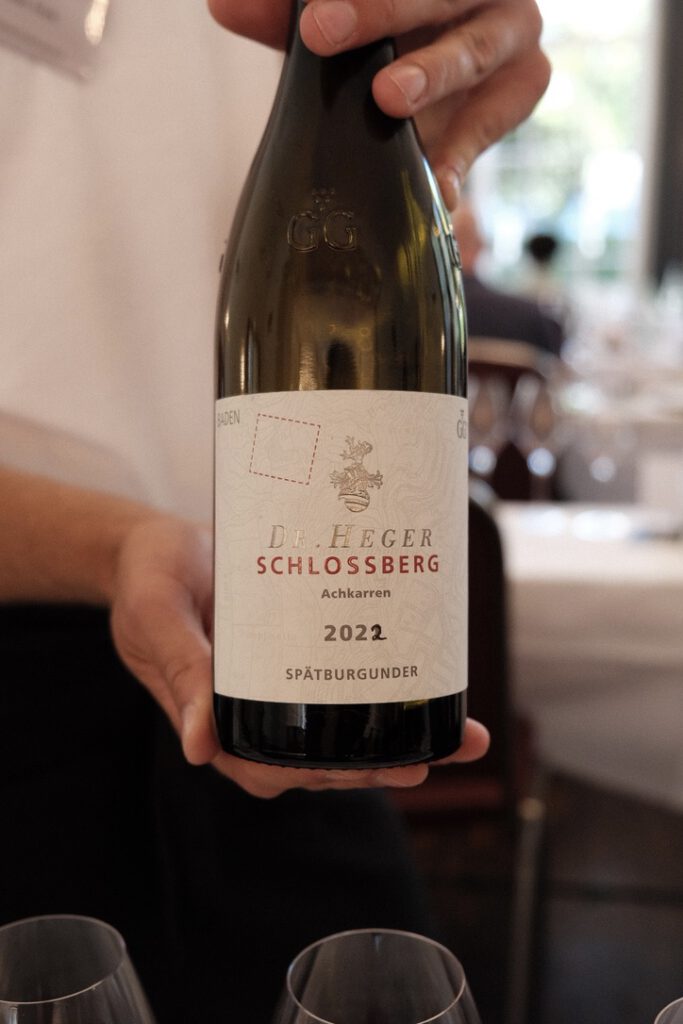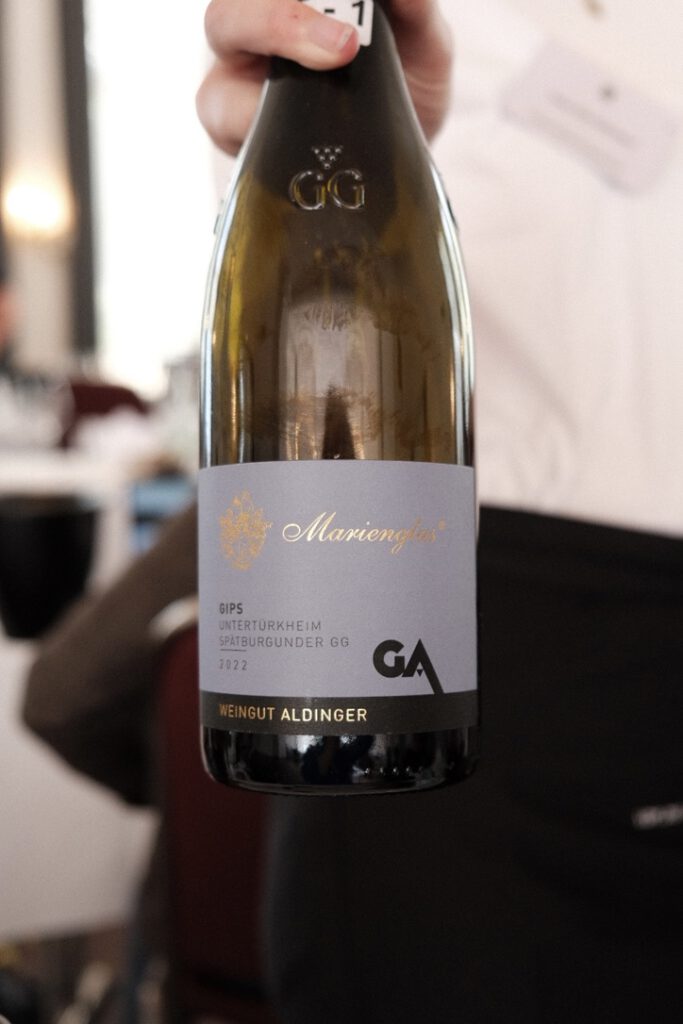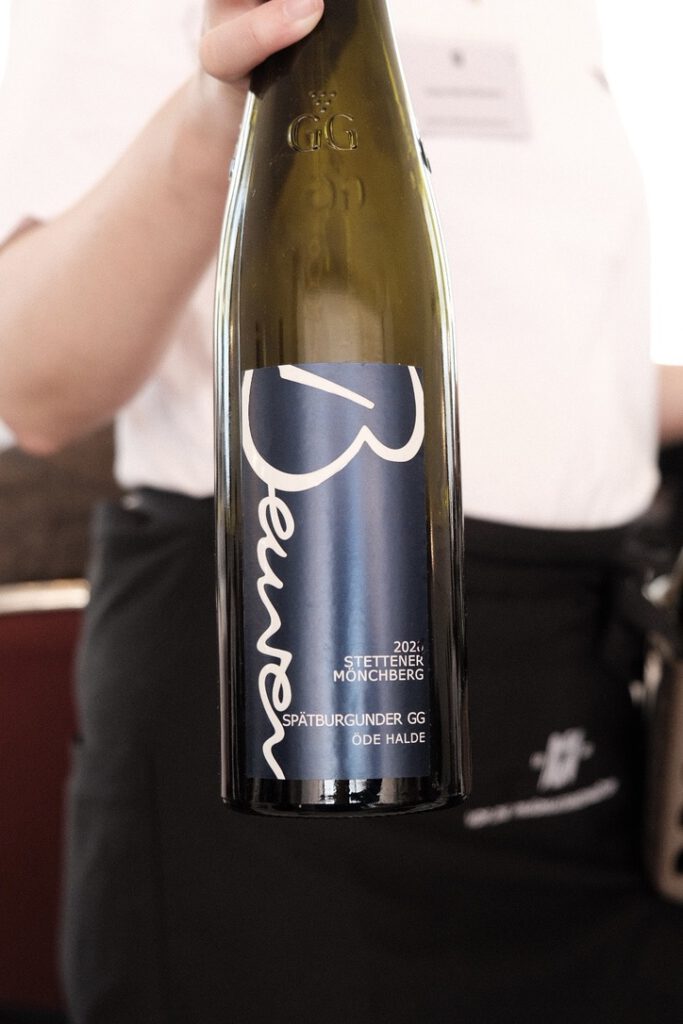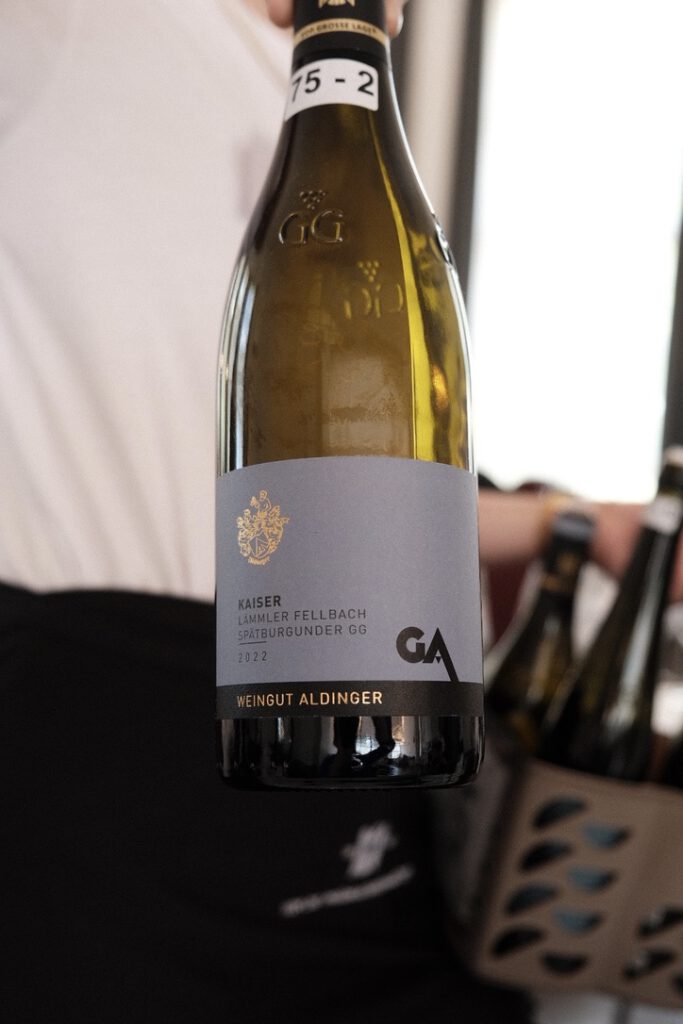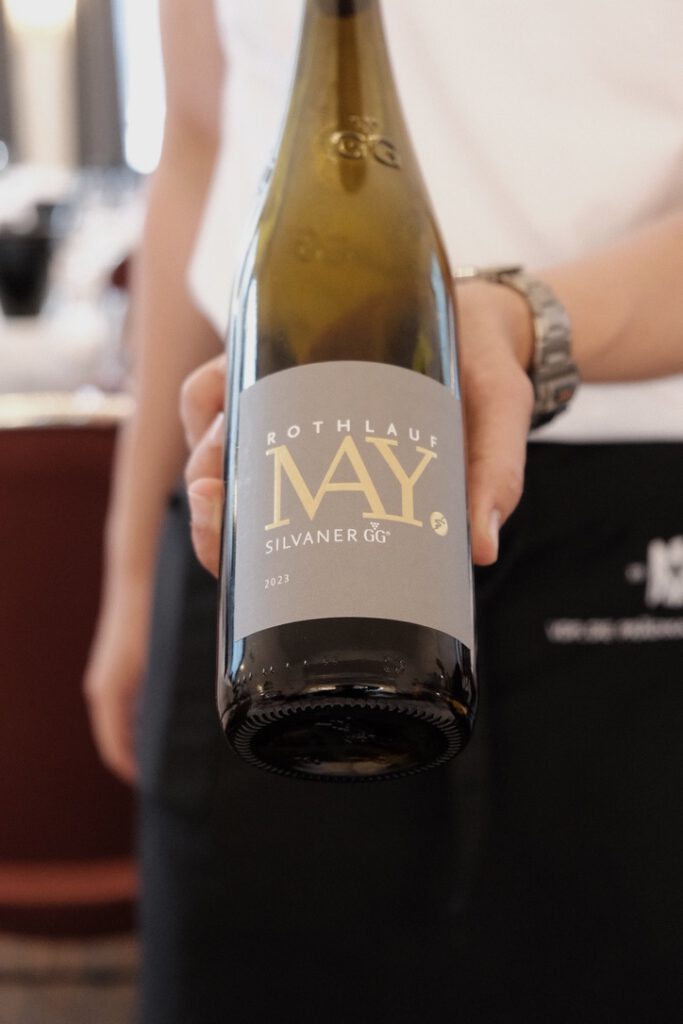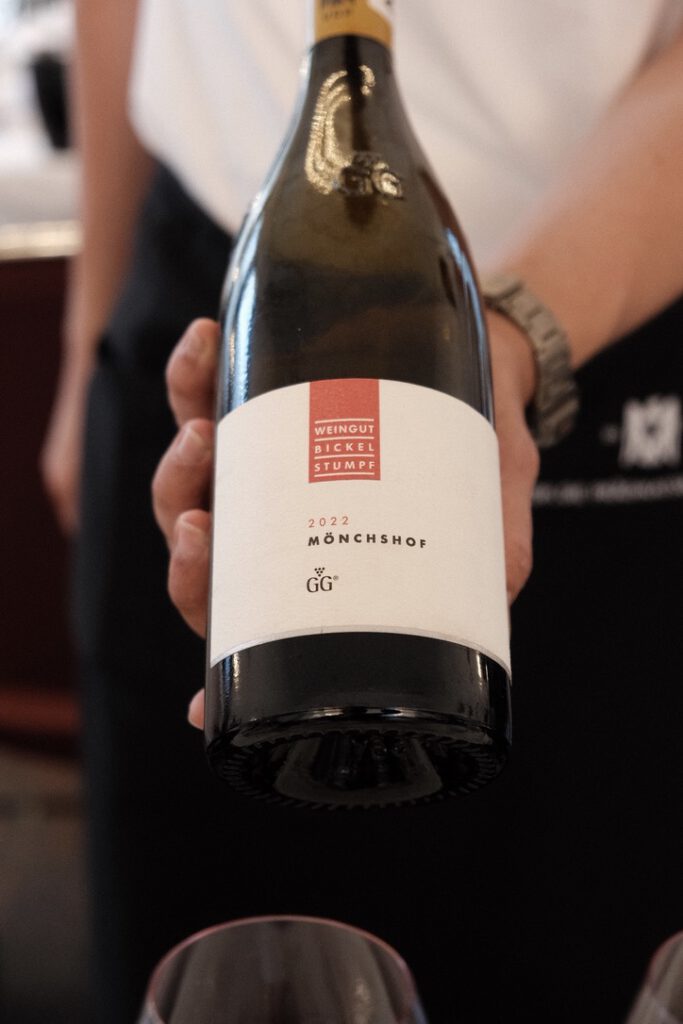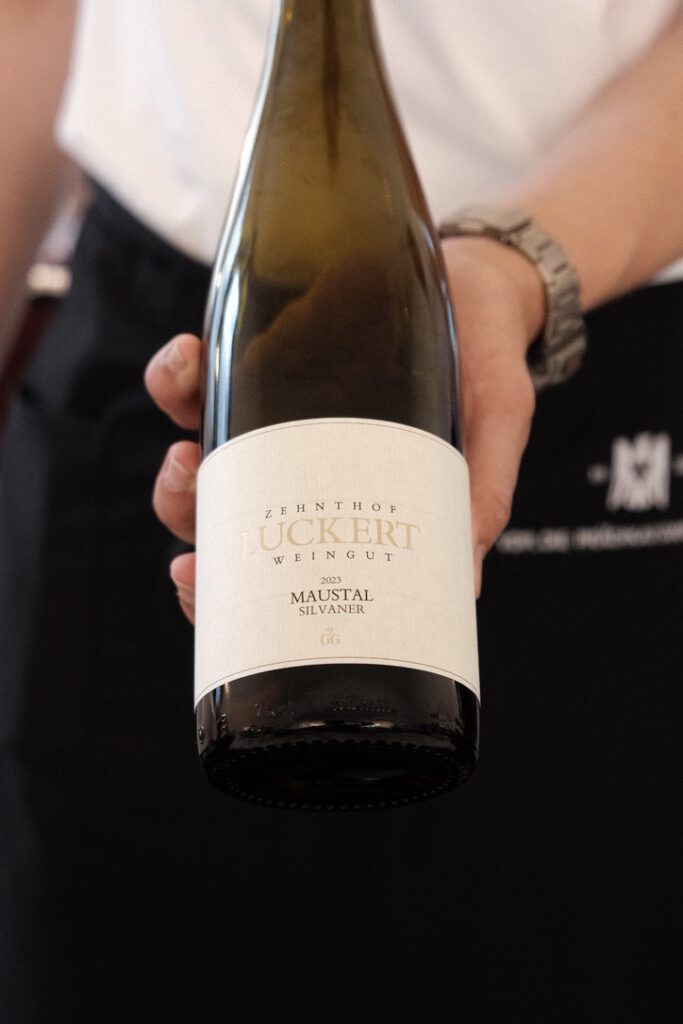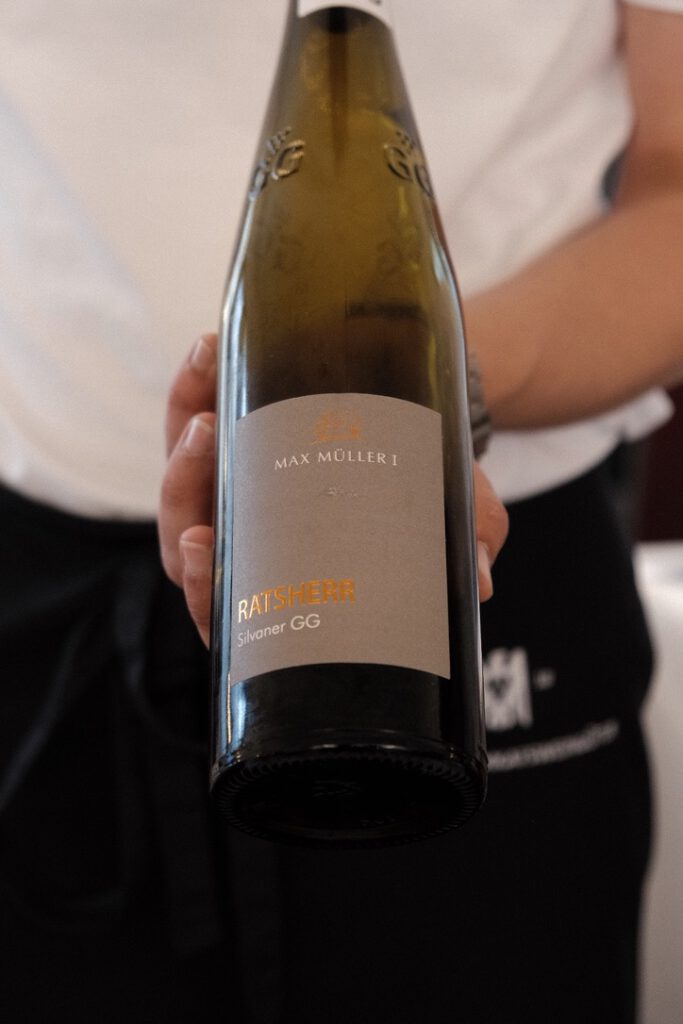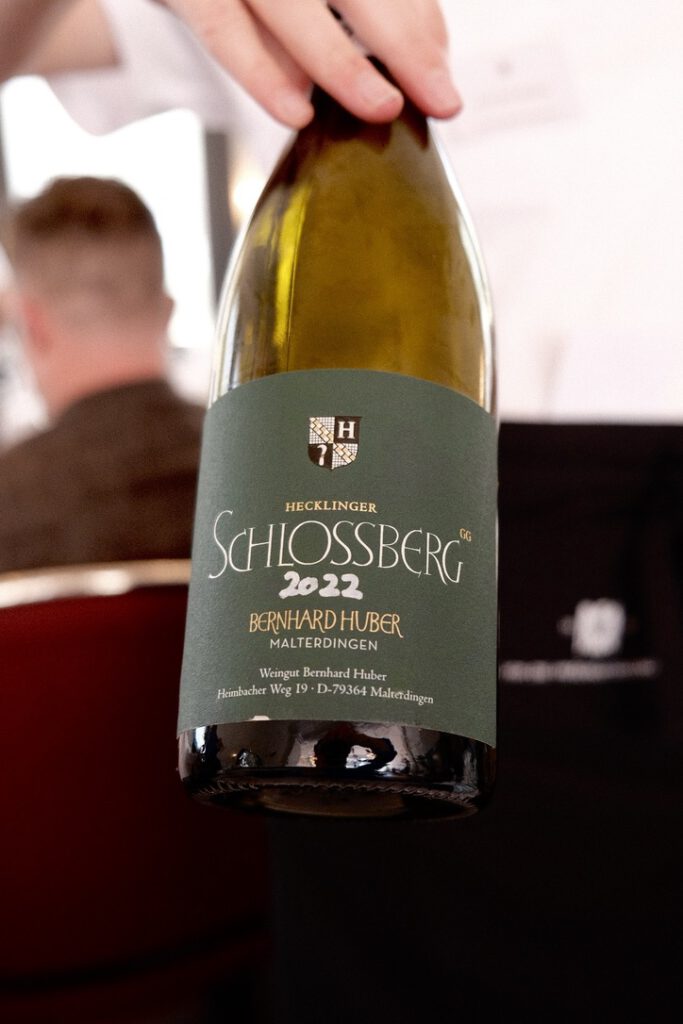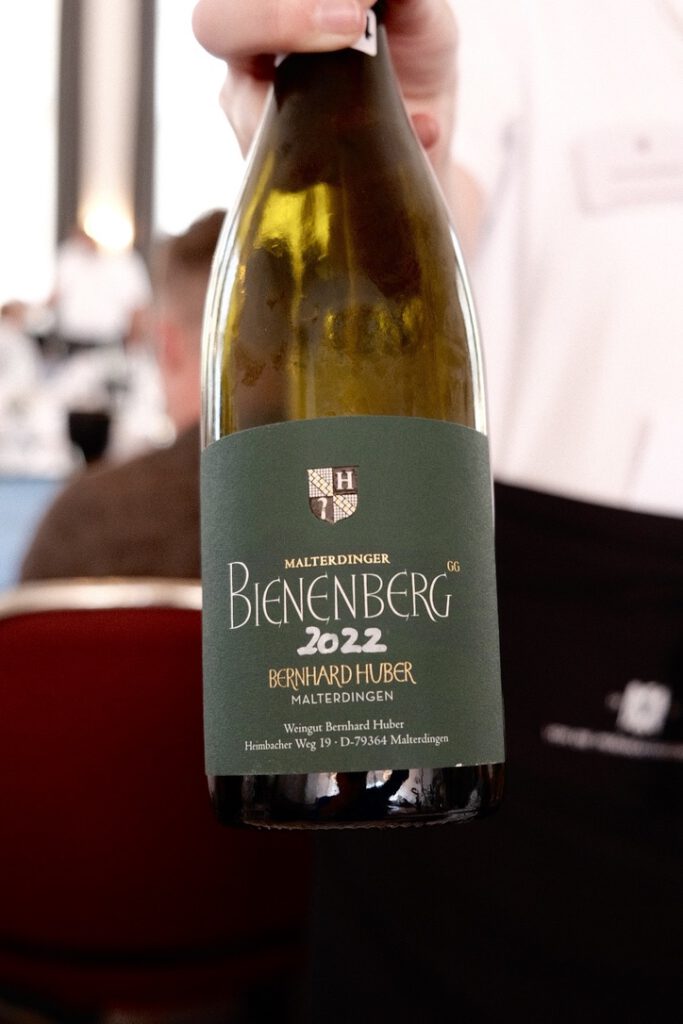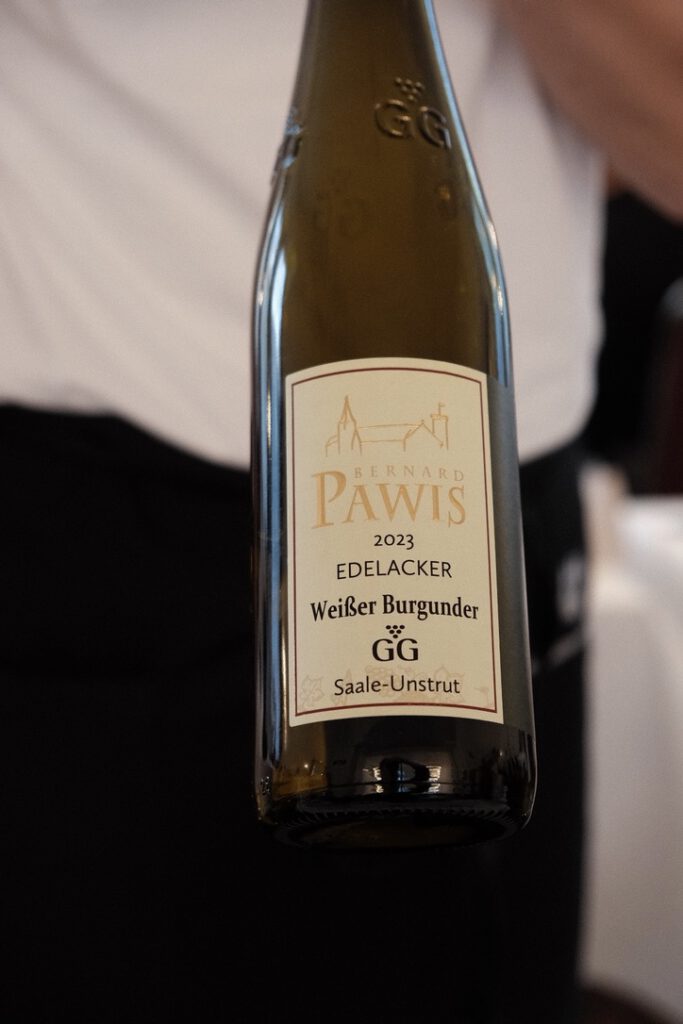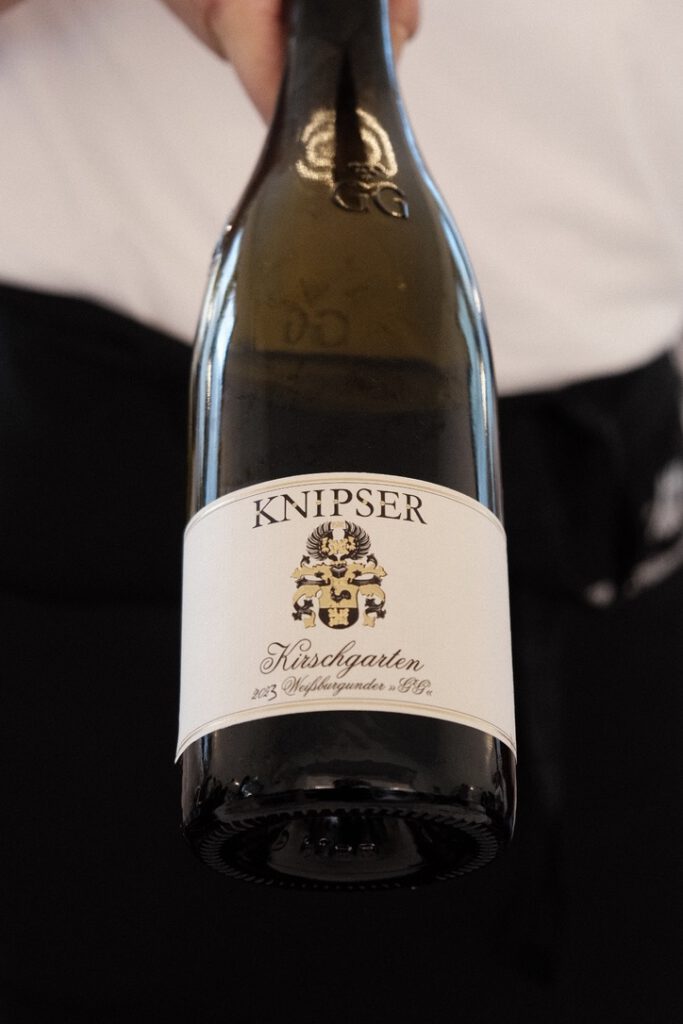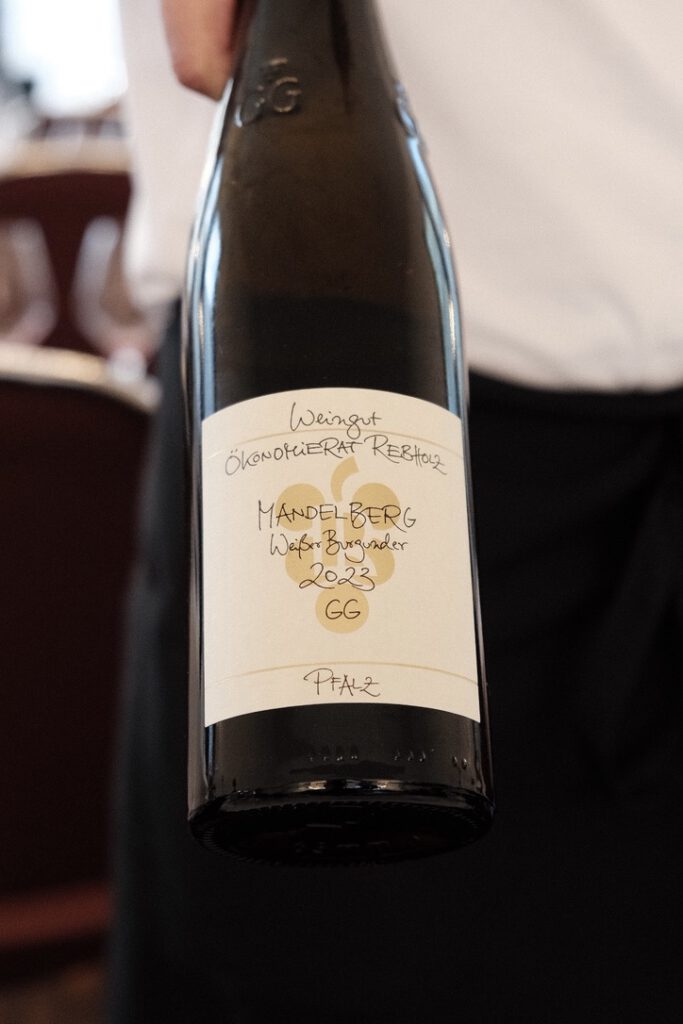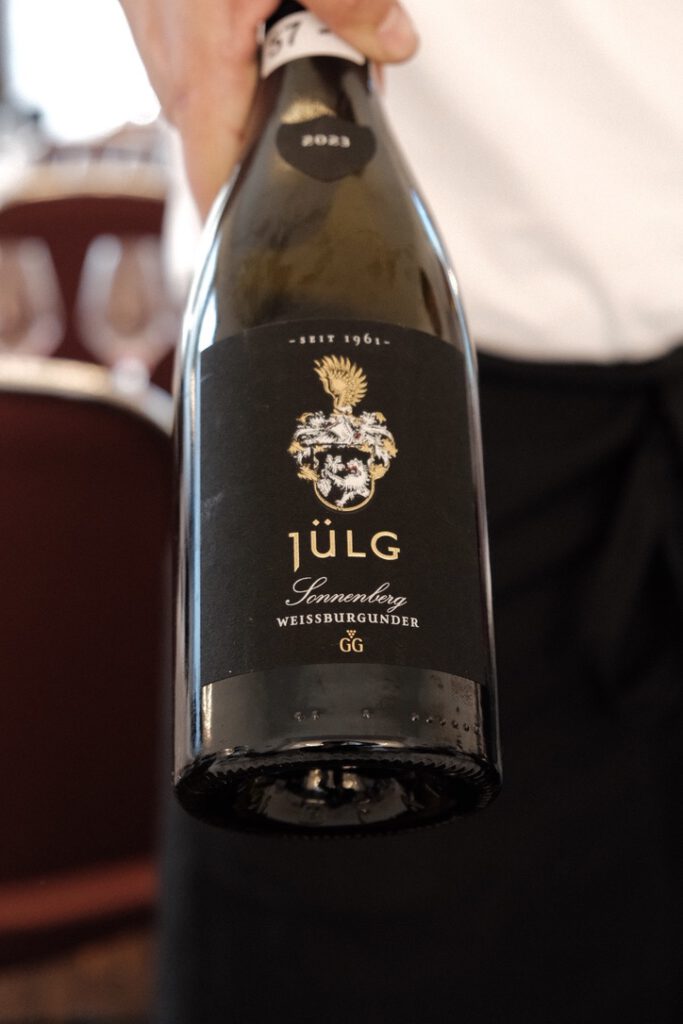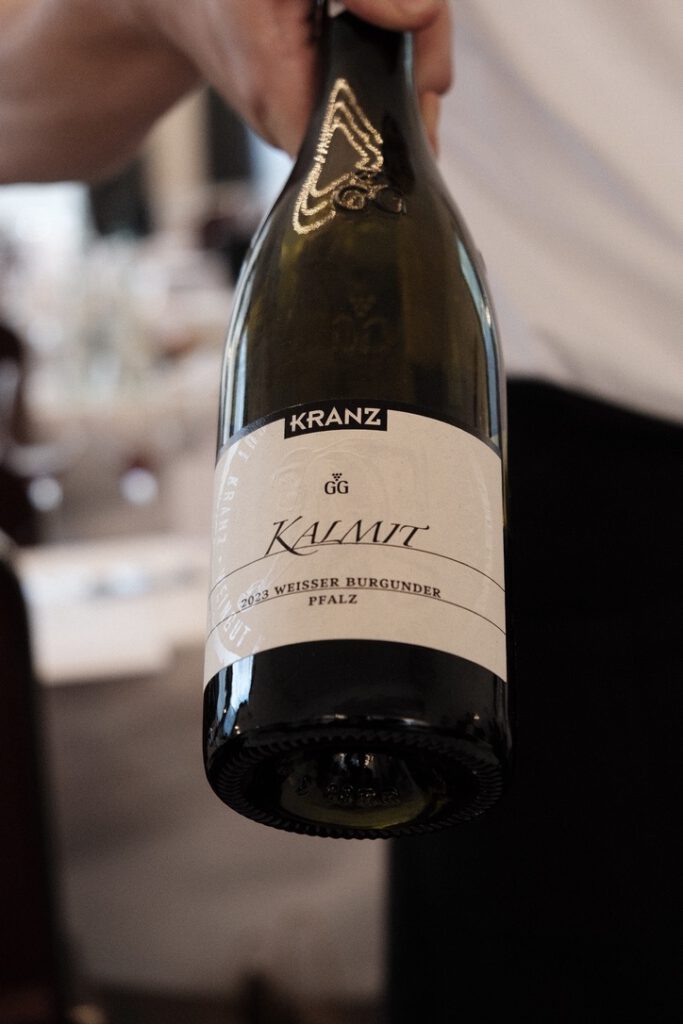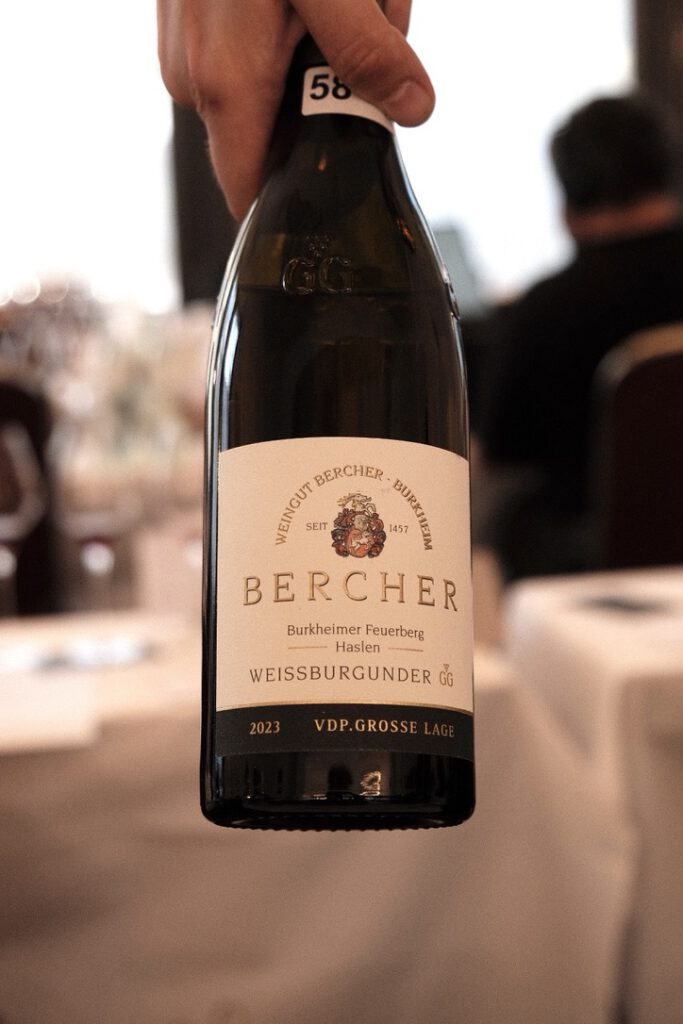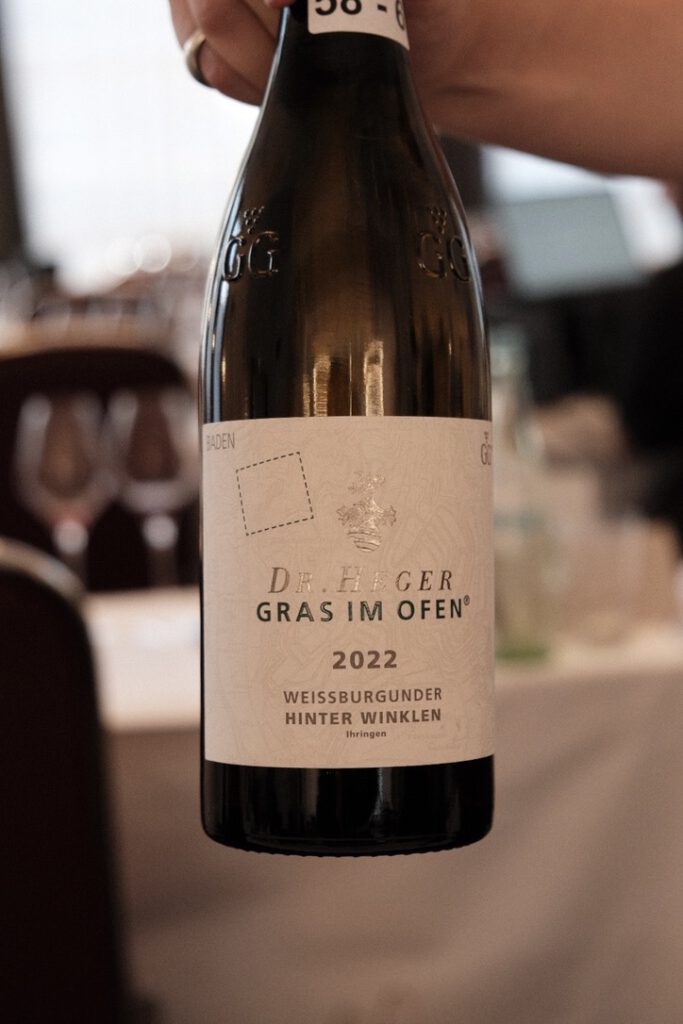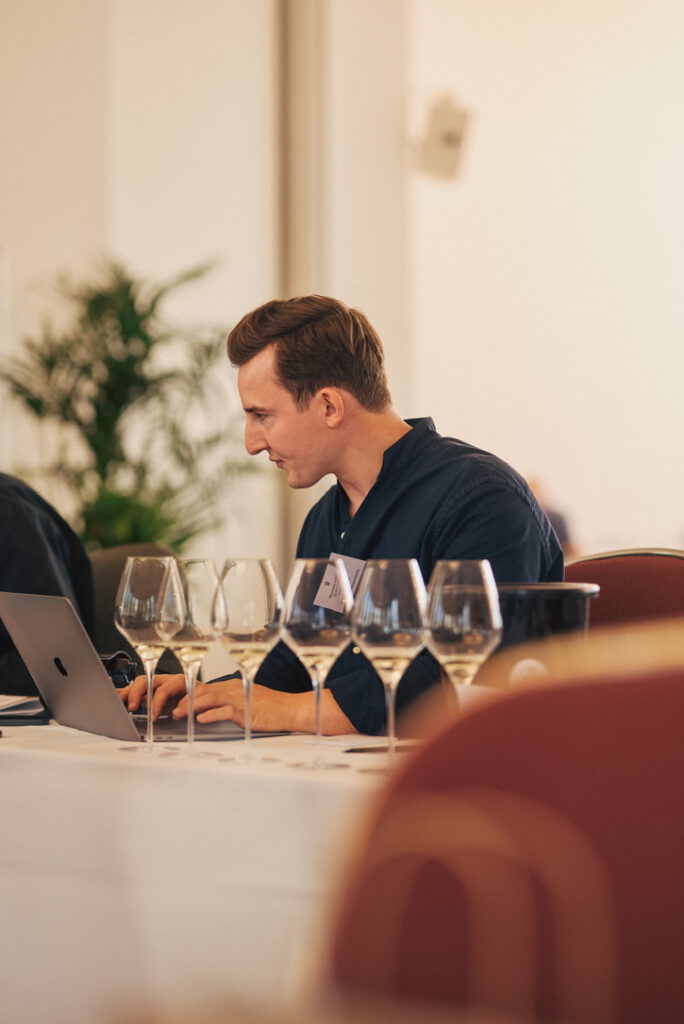Pinot Blanc and I haven’t exactly had a love affair up until now—at least not when it came to Grosses Gewächs wines. I’ve always associated the grape with approachable, uncomplicated wines that are simply enjoyable. But my experience in Wiesbaden changed that, showing me that Pinot Blanc can indeed belong in the serious GG category. Here are my standout highlights from across the regions:
The 2023 Edelacker from Weingut Pawis in Saale-Unstrut surprised me with its green spice, fine elegance, and juicy peach character. On the palate, it was quiet and deep, elegant, with bright fruit, spice, and a touch of salinity in the finish. Only a faint hint of candy-like sweetness at the end detracted slightly. Excellent.
The Kirschgarten vineyard in the Pfalz revealed itself as a true mecca for Pinot Blanc. Knipser presented a spicier, still somewhat closed version with subtle oak, while Kuhn (2022) went for more intense yellow fruit and bolder oak aromas. Both GGs had their appeal. Both excellent.
However, my real highlights came from the Southern Pfalz: Rebholz, Siegrist, Jülg, and Kranz delivered across the board. The Mandelberg from Rebholz was smoky, reductive, and marked by taut acidity. Excellent. The Sonnenberg from Jülg was rich, yeasty, and powerful—a true powerhouse (excellent), while Kranz, with his Kalmit, showcased Pinot Blanc’s elegant, dancing side. Mineral-driven, bright-fruited, and with fine structure. Excellent.
To round things off, a brief detour to Baden: Heger’s 2022 Winklerberg Hinter Winkeln impressed me with its depth and spiciness, with hints of smoky notes, yet it remained fine and elegant on the palate, with good acidity and balance. Excellent. I also discovered a winery previously unknown to me—Bercher. Their Pinot Blanc from the Feuerberg Halsen was fresh, herbaceous, and compact on the palate. An exciting new addition for me. Excellent.
